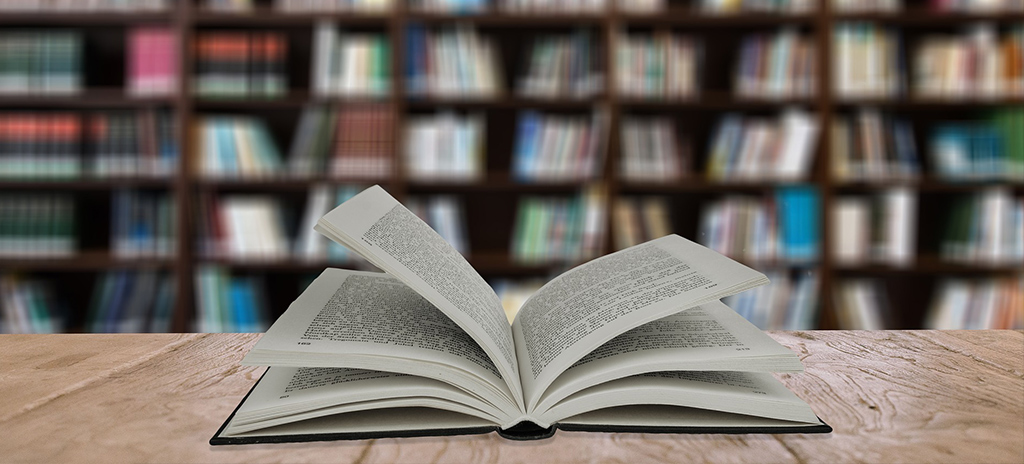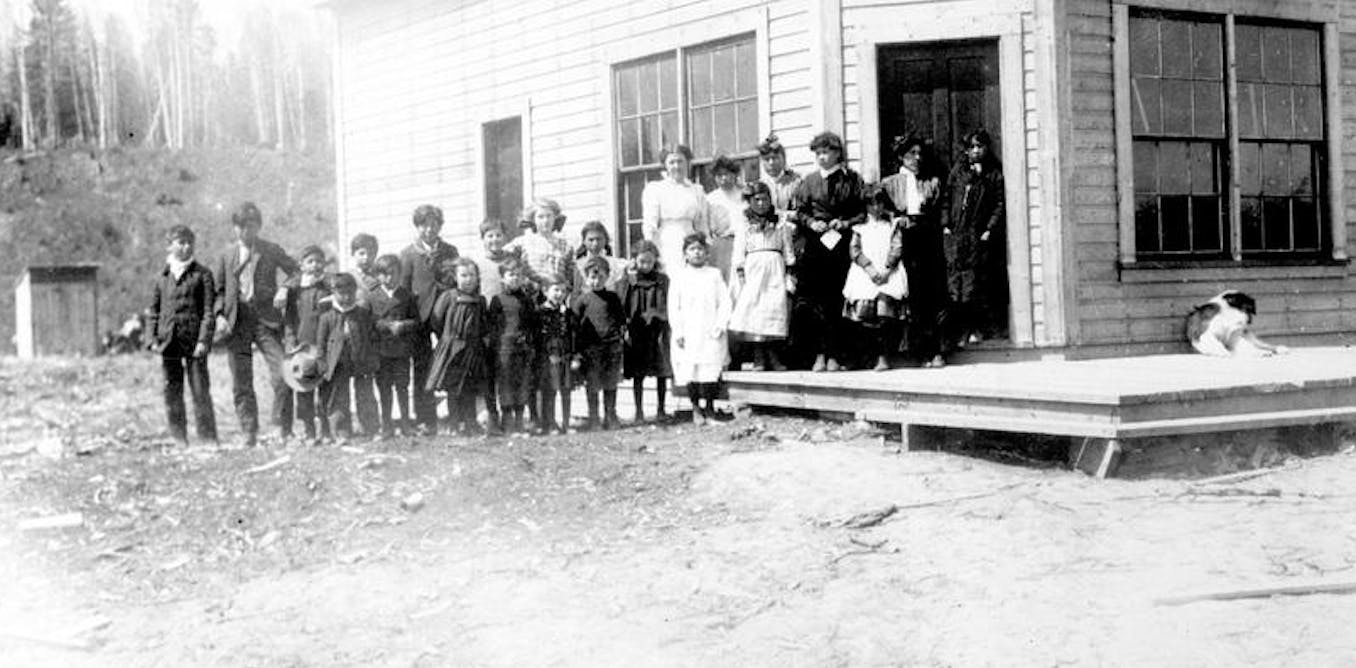
In gentle of the Fact and Reconciliation Fee (TRC), many Canadians are coming to phrases with Canada’s historical past of education and settler colonialism.
The TRC’s findings, together with revelations about finding unmarked graves at many former residential college websites and the latest conclusion of the Indian Day Colleges settlement declare deadline, have challenged Canadians to confront a tough fact: their authorities, in partnership with numerous church buildings, devised, deployed and defended genocidal college programs for Indigenous Peoples for greater than a century.
Learn extra:
Ignore debaters and denialists, Canada’s remedy of Indigenous Peoples suits the definition of genocide
Indian Residential Colleges and Indian Day Colleges, nonetheless, haven’t been the one sorts of education complicit in colonialism.
The TRC harassed that we should have fact earlier than reconciliation. A part of the “complicated fact” is knowing that public education has additionally performed an vital position in settler colonialism in Canada.
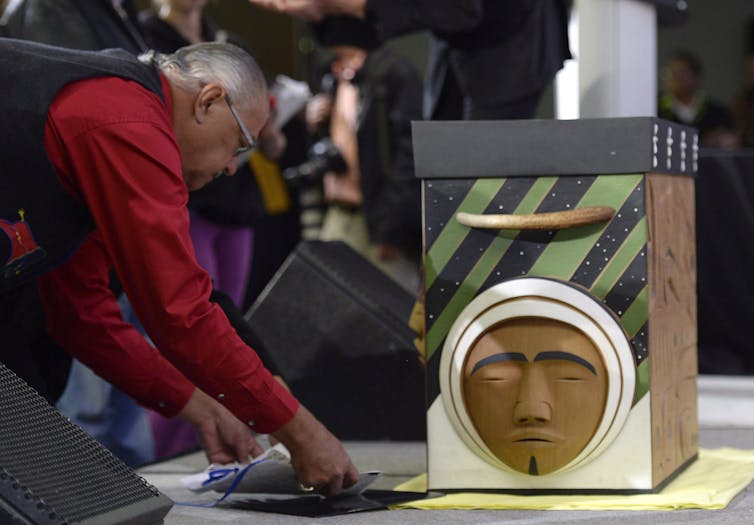
THE CANADIAN PRESS/Adrian Wyld
Constructing a capitalist settler society
In my new e book, Classes in Legitimacy: Colonialism, Capitalism, and the Rise of State Education in British Columbia, I look at how numerous sorts of education (day and residential colleges, sure, but additionally public colleges) supported the creation of a capitalist settler society in Canada’s westernmost province between 1849 and 1930.
I present how separate, although typically overlapping, sorts of education for Indigenous Peoples and non-Indigenous communities imparted related “classes in legitimacy” — the formal and casual teachings that justified colonialism and normalized the unequal social relations of settler capitalism.
Colleges served as laboratories for studying colonial legitimacy and coaching college students to contribute to the capitalist financial system in British Columbia, all through Canada and throughout the British Empire.
There are a selection of the way wherein public education, along with day and residential education, was implicated.
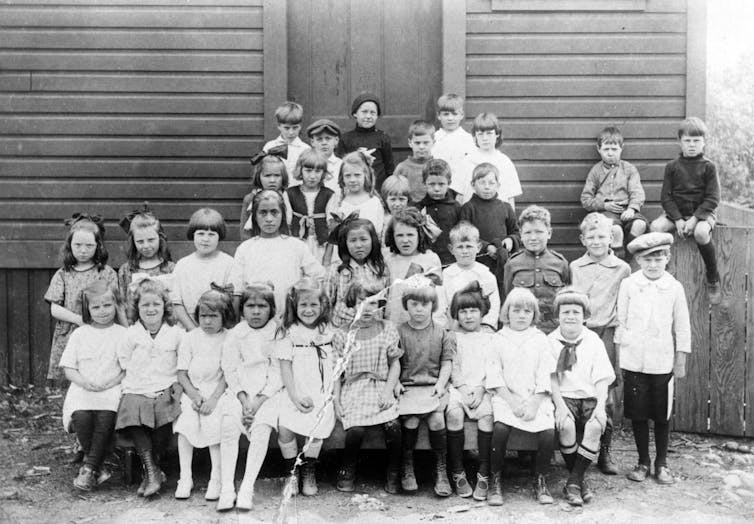
(Archives of North Vancouver, Picture 6490)
Land and taxes
In British Columbia, public education was largely paid for by dispossessing Indigenous Peoples of their land.
Within the 1850s, Britain merely asserted sovereignty over what turned the colony of British Columbia. Then, the province of British Columbia refused to signal treaties with Indigenous Nations.
In consequence, a lot of British Columbia’s land base was — and stays — stolen, unceded land. Throughout the early interval of colonial settlement, and in an effort to draw and retain colonists and their households, state officers typically reserved “free” plots of land for use for the development of colleges.
Property taxes had been then launched to assist pay for rising education prices.
Thus, stolen Indigenous land underwrote the growth and upkeep of the general public college system in British Columbia, as elsewhere.
Overlapping officers
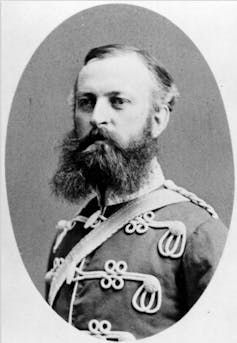
(The Royal BC Museum, Picture F-03704, British Columbia Archives)
Many college officers in British Columbia moved between completely different instructional spheres. Residential college principals sat on public college boards and their college students turned lecturers in day and residential colleges. Public college graduates additionally taught in day and residential colleges.
Israel Wooden Powell, a physician and early public college advocate in 1860s Victoria, served as the primary Superintendent of Indian Affairs for British Columbia within the 1870s and Eighties. Powell used his place to foyer the Division of Indian Affairs (DIA) to create new Indian Day Colleges and Indian Residential Colleges within the province.
Later, within the early 1900s, R.H. Cairns served as a public college trainer, principal of the Coqualeetza Indian Residential Faculty, after which because the DIA’s college inspector for British Columbia.
Comparable schooling supplies
Although day, residential, and public colleges had been speculated to be separate types of schooling, they principally shared the identical instructional supplies.
Within the Eighteen Nineties, the DIA instructed day and residential colleges to undertake and comply with the native provincial public college curriculum. This included assigning historical past and social research textbooks that disparaged Indigenous Peoples and other people of color by way of racist representations — and it normalized colonialism and racism as “commonsense.”
Many college students in residential colleges, nonetheless, solely acquired tutorial instruction for half the day, with the opposite half being reserved for performing handbook labour for the college.
In consequence, by the Nineteen Twenties the overwhelming majority of Indigenous college students by no means superior greater than Grade 1 or 2. That is why some historians, constructing on Survivor testimony and Indigenous data, have argued that full assimilation into mainstream settler society was by no means the objective of coverage makers.
As an alternative, Indigenous college students in British Columbia, as elsewhere, had been educated for inequality.
Indigenous college students in public colleges
Lastly, many Indigenous youngsters and youth attended public colleges in British Columbia from the 1840s by way of to the Forties and Fifties when integration turned an official coverage.
My analysis reveals that Indigenous college students, like these (within the lead picture) on the South Fort George Faculty in 1911, close to Prince George, B.C., persistently attended public colleges in higher numbers than beforehand thought.
Many Indigenous mother and father advocated for his or her youngsters to have the proper to attend public colleges (as a substitute of day or residential colleges). Some settler mother and father and provincial and federal authorities officers permitted and at occasions even defended this apply for numerous causes, together with to maintain sure colleges open all through the province.
The hyperlinks between public education and settler colonialism thus want extra crucial consideration.
The Indian Residential Faculty and Indian Day Faculty programs have now ended. However public education continues to assist settler colonialism and nation constructing, as some educators have identified.
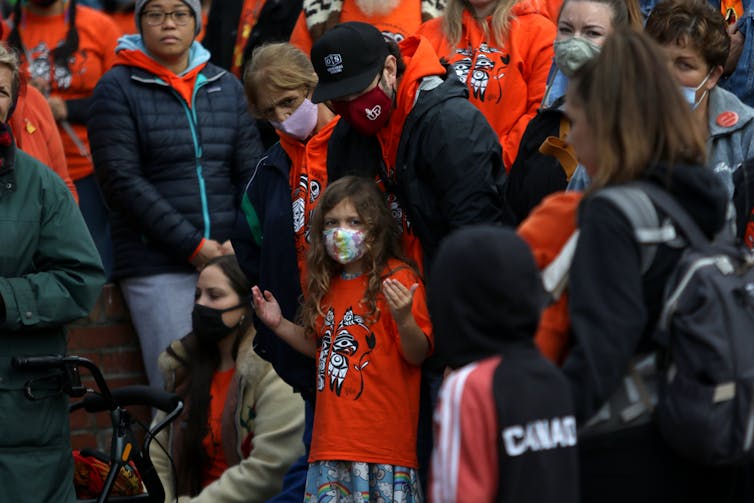
THE CANADIAN PRESS/Chad Hipolito
Decolonizing schooling at the moment
Certainly, the core goal of state education — to teach youngsters and youth in methods that can put together them to contribute to and thus maintain an ever-evolving capitalist settler society — stays little modified from the mid-to-late 1800s.
Learn extra:
Reckoning with the truths of unmarked graves of Indigenous youngsters, schooling programs should take motion
It’s true that some lecturers at the moment are working exhausting to Indigenize and decolonize their lecture rooms to confront the racism embedded in instructional buildings and practices — or wish to — although extra coverage assist is crucial. In B.C., some Indigenous Nations are taking on management of native colleges, however a lot work stays.
As Canada marks a second Nationwide Day for Fact and Reconciliation, I hope that a greater understanding of the connection between public education and settler colonialism may help spark new questions on learn how to decolonize and rework schooling at the moment.




